“I tell people the first 60 years are the hardest,” jokes Charles Berlin ’58, Ph.D. ’63. He would know: Berlin has headed Harvard Library’s Judaica Division since September 1962, when he was a 26-year-old graduate student finishing a dissertation in Jewish studies, and the division, which documents Jewish life and culture—in every language, place, historical period, and format—was just getting started. “Oh, that sounds like a lot of fun,” Berlin, the Friedman bibliographer in Judaica in the Harvard College Library, remembers blithely thinking when he was first offered the job, which had just been created. “I had spent basically my whole student life in the library.”
His whole professional life too, now. This September marks Berlin’s 60th anniversary with the Judaica Division, which is also turning 60. The largest collection of its kind outside of the National Library of Israel, the division’s holdings (which amount to 5 percent of Harvard Library’s total) include books, periodicals, maps, musical scores, posters, photographs, audio and visual recordings, and all kinds of ephemera. For instance: the assemblage that decorates the metal filing cabinets in Berlin’s office—dozens of refrigerator magnets, from cities around the world, listing local Shabbat candle-lighting times. “Most people will get this from their synagogue once a year,” says Judaica collection specialist Vardit Samuels, “and afterward they’ll throw it away.” It’s the kind of artifact that’s rarely preserved, except in places like this.
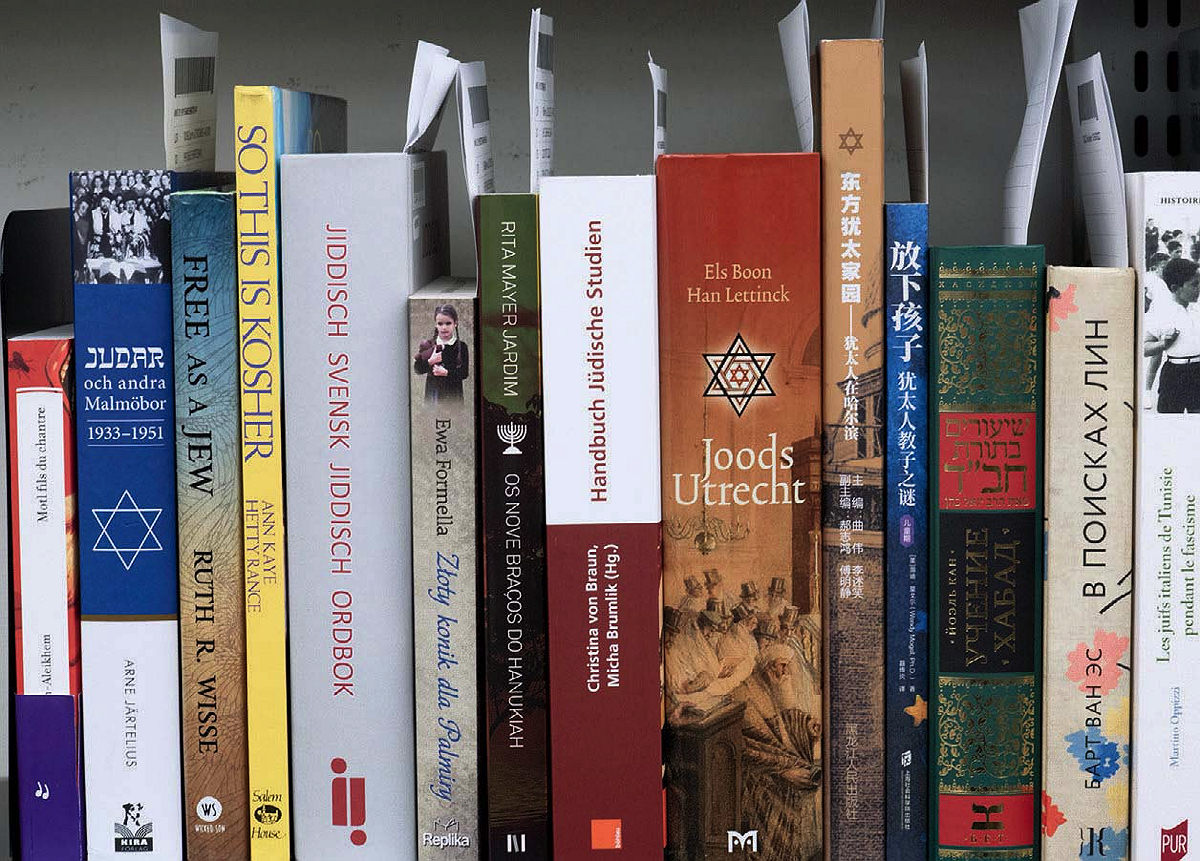
A selection of Judaica books in various languages from around the world
Photograph by Stu Rosner
More than 100 languages are represented in the Judaica collection, and the number of titles exceeds 900,000; on top of that, a massive digital archive includes 6.3 million images. Among the division’s holdings are particularly rich collections related to Israeli politics and elections, theater, Jewish music, and the ultra-Orthodox Jewish world. “Our mission is to collect comprehensively,” Berlin says. “We don’t make value judgments; we collect. And we try to collect everything, because we cannot be censors of what scholars will do.…You never know what a scholar will find interest in discovering. And if it’s not there, they can’t discover it.”
Although the Judaica Division was established formally in 1962, Harvard’s collection of Judaic artifacts dates back to the Puritans. Among the books that John Harvard left to the College in 1638 were a number of Hebrew grammars, and Hebrew was a part of the curriculum from the beginning (the first president, Henry Dunster, was a Hebrew scholar). The College Library’s catalog from 1723 lists Hebrew rabbinic texts printed in Italy and the Netherlands, along with Latin translations of Hebrew texts (all, however, destroyed in the fire that consumed Harvard Hall in 1764). More items arrived during the eighteenth and nineteenth centuries: 2,000 Yiddish publications donated in 1898, plus smaller and more specialized Judaica collections in the law and medicine libraries.
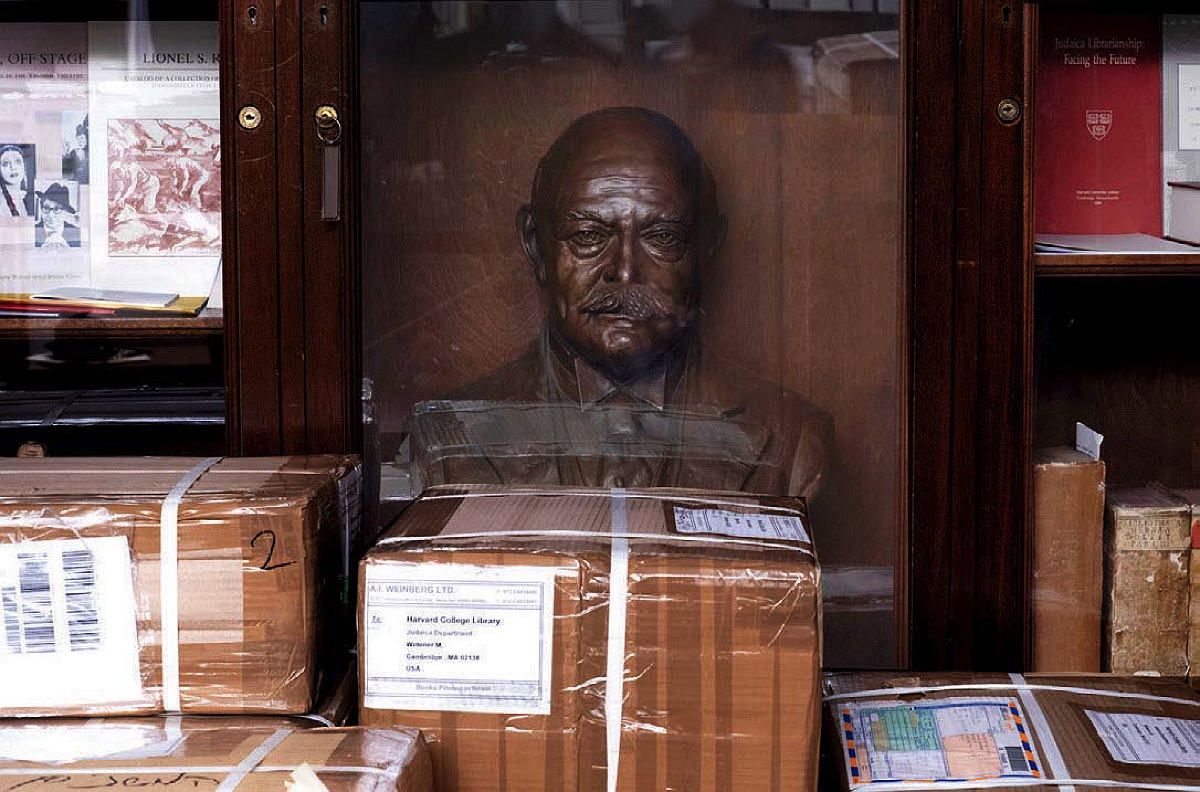
A bust of philanthropist and congressman Lucius N. Littauer, A.B. 1878, the "patron saint," whose gifts helped form the cornerstone of the Judaica Division
Photograph by Stu Rosner
In 1925, Lucius N. Littauer, A.B. 1878, a New York philanthropist and congressman, endowed a professorship in Jewish history and philosophy, making Jewish studies a recognized scholarly discipline at the University and cementing a need for a collection that would sustain its research. Five years later, Littauer purchased for Harvard the book collection of Ephraim Deinard, a New Orleans Hebrew bibliographer and bookseller; those 12,000 volumes—many of them rare—would become the cornerstone of the Judaica holdings. During the next couple of decades, the library’s acquisition of books and materials intensified, and the establishment of Israel in 1948 added a new source of Hebrew publications (today, Israel provides about 80 percent of the division’s yearly intake). Then in 1957, Boston attorney Lee M. Friedman, A.B. 1893, died, leaving Harvard his collection of books, pamphlets, and ephemera printed over five centuries. At that time, it was the largest assemblage of Western-language Judaica in private hands in North America. His bequest also provided an endowment large enough to justify the appointment of a curator for the Judaica collection.
Enter Charles Berlin.
It is difficult to explain—or even, really, to comprehend—the vastness of the collection today. Berlin speaks of it in almost mystical terms, as a kind of endless quest, an inextinguishable hunger. “The nature of this work is that it’s always unfulfilled, because tomorrow brings new publications,” he says. “So, by nature, there’s always this goal, to get what you don’t have. That’s the beauty of it, too. It’s a perpetual motion machine.”
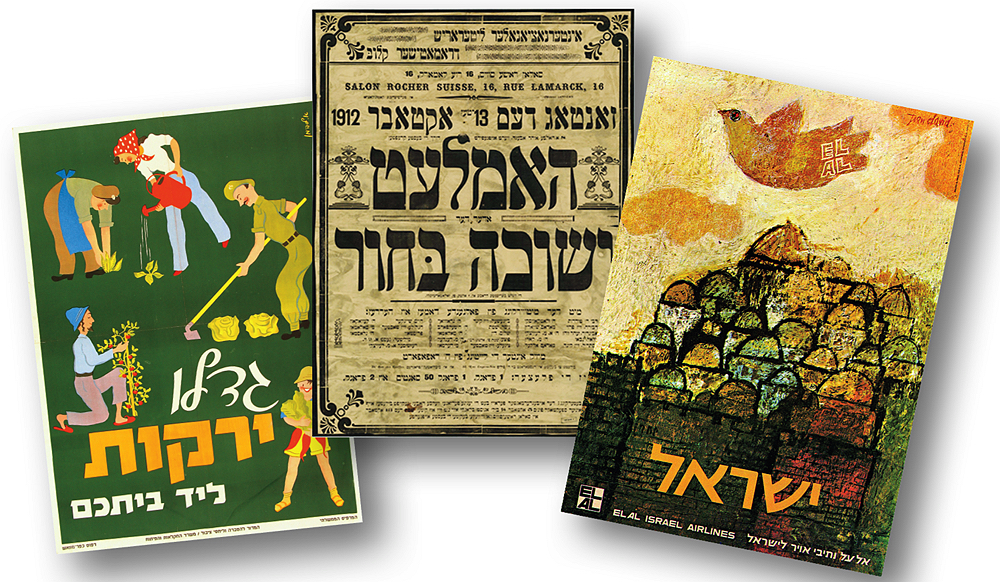
From left: a 1950s poster encouraging Israelis to grow their own vegetables; a 1912 poster for a Yiddish theater production, "Hamlet, oder der Yeshuve [!] bohur," in France; and a 1967-68 destination poster from the Israeli airline EL AL
Images courtesy of the Harvard Judaica Division, Widener Library
Berlin and his staff seldom participate in the rare-books auction market, he says. They will not spend $100,000, or even $5,000, on any single item, no matter how rare. “Truth be told, most of those early printed books have been digitized.…You can find virtually every rare book available online,” he says. “What you won’t find there are the books we acquire on a daily basis”: not just texts by prominent novelists and historians, but reports produced by Israeli schools or government ministries or relief organizations that offer a glimpse into everyday life there. There are family publications, sometimes 50 or 200 pages long, written in memory of a fallen soldier or a revered matriarch. “Perhaps someone who came to Israel many years ago and was not a politician, not famous—but her life story is a document,” Berlin says. “It’s really very important.” Publications like that are usually written for a small audience, but the details they offer are invaluable: “These are true rarities.”
The collection had “everything under the sun,” Penslar says, “programming that really allowed me to get a granular sense of Israeli culture.”
Frost professor of Jewish history Derek Penslar is one of the many scholars who have relied on the Judaica Division for decades. In the early 2000s, he was studying the history of radio and television in Israel, work that yielded a series of articles about the relationship between radio and nation-building in the post-colonial world. “And the only place—not only outside of Israel, but really the only place in the world—where I could get recordings of Israeli radio programs was at Widener,” he says. The collection had “everything under the sun”: news programs, investigative documentaries, radio plays, children’s shows—“programming that really allowed me to get a granular sense of Israeli culture in the 1950s and 1960s,” Penslar says. He recalls traveling to Harvard from Toronto, where he was teaching at the time, and the Judaica collection’s staff setting him up with a stack of CDs, which he’d take to the Phillips Reading Room and stay for hours, listening.
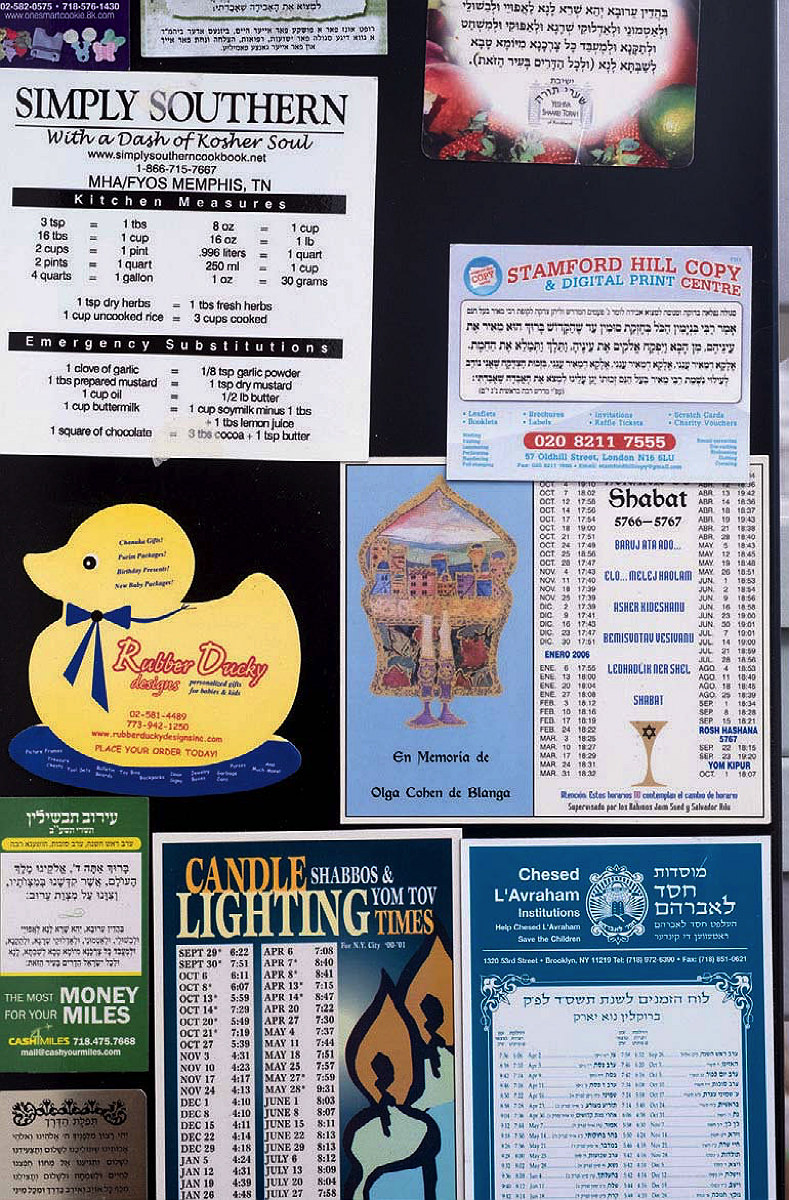
The division's ephemera collection includes magnets from around the world, including some listing Shabbat candle-lighting times.
Photograph by Stu Rosner
Penslar is now working on a global history of the 1948 Middle East War. Among the primary sources he’s found in the collection are mimeograph pamphlets produced in European displaced-persons camps after World War II. “They give you insight into the Jews in these camps, and their preparations to go and fight in what became Israel in 1948,” he says. “An amazing resource.”
On a weekday afternoon in late June, Berlin and his staff offer a taste of similar resources and rarities. As he supervises via video chat from his home office (where he has worked remotely since the start of the pandemic), technical services librarian Elizabeth Vernon and Samuels, the collection specialist, stand in the center of his office in Widener, a room of organized chaos, with bookshelves stretching toward the ceiling and papers piled on every surface. Stacked across the floor are cardboard boxes from overseas. On a few tables and filing cabinets, Vernon and Samuels have laid out items, most of them from recent shipments sent by the division’s fleet of vendors: contemporary Israeli fiction and poetry, children’s books in Yiddish, a matzah box from Russia, flyers from a Jewish community center in Krakow, a book of Jewish recipes from Bulgaria, a dozen 15-year-old Yellow Pages books from Israel, a volume of COVID-19 reflections from a Jewish community in Rhode Island. There are several books from Mexico: one about the High Holidays and another about Jews from the Middle East (“There’s a very large community in Mexico,” Vernon says). Elsewhere: a catalog of affordable kosher groceries from London, a Passover magazine from Canada, a book from Norway about the Holocaust there, a German rabbinical seminary’s account of one town’s Jewish history, an advertisement for a klezmer concert from the Chabad of Coney Island. Several publications are written in Chinese. The Judaica Division receives lots of material from China, Korea, and Japan, Vernon explained, usually produced by authors who are not Jewish (the communities there are small) but who are interested in Jewish culture and education. “There’s a lot of ‘how to raise your child according to the Talmud,’” Vernon says, similar to the books written by Westerners on, for instance, the principles of feng shui.
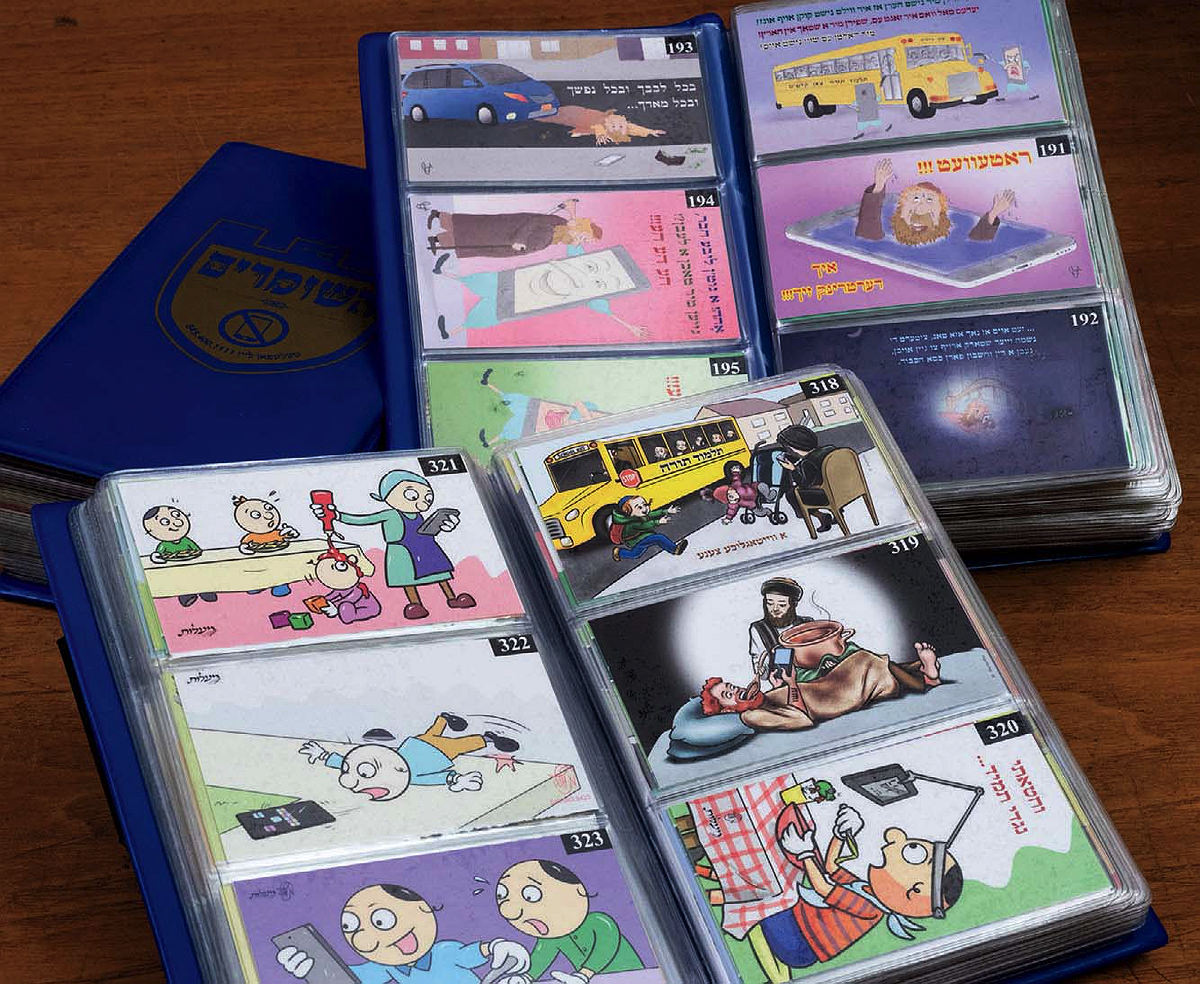
Trading cards printed in London for a ultra-Orthodox Jews warn children of the dangers of technology, 2017.
Photograph by Stu Rosner
There are also toys and board games. From Berlin’s desk, Samuels retrieves a book of trading cards produced in London by an ultra-Orthodox group, warning children of the evils of technology. Colorful illustrations show parents staring distractedly at computer screens, and animals—a monkey, a cow, an elephant, a llama—all dressed in black suits, all in thrall to smartphones. On one card, a bearded man with a kippah bears an oversized phone on his back like a boulder.
And posters, mostly from Israel. Samuels lifts an armload from the corner and unrolls them onto a table: dozens of election posters, pamphlets, and handouts, some decades old, published in Hebrew, Arabic, Yiddish, Russian. Many concerned national candidates—one displays a huge photo of former prime minister Yitzhak Rabin, who was assassinated in 1995—but others were for local elections in towns far from Tel Aviv or Jerusalem or Haifa. The collection also includes cultural and religious posters—to announce a lecture, a choir performance, a protest. “Among some communities of the ultra-Orthodox in Israel, they don’t approve of television and the Internet,” Berlin says, “and so posters are still a major means of communication.”
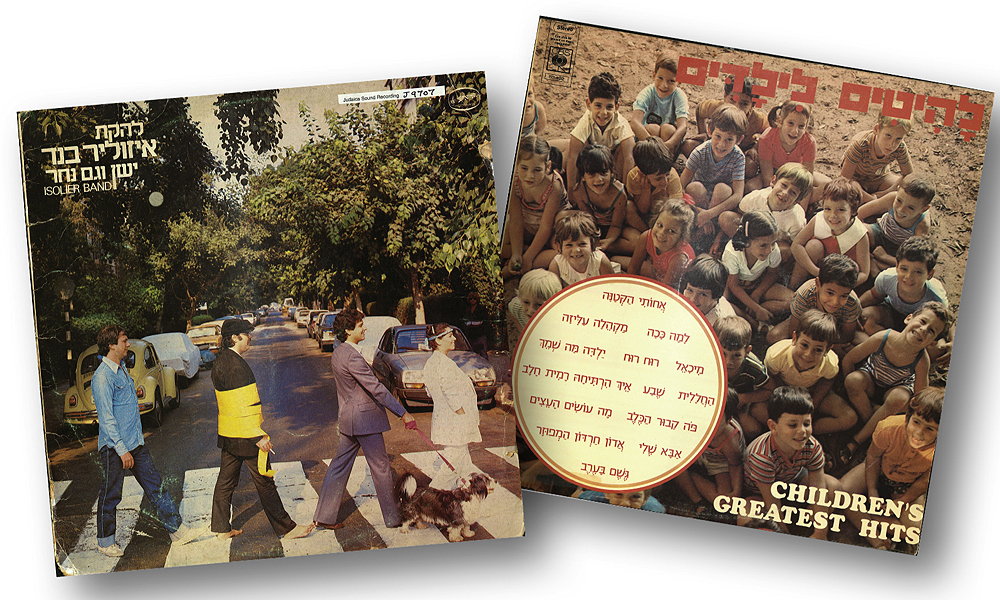
From left: a 1982 album by the Israeli pop group Isolier Band; a 1972 LP of children's songs from Tel Aviv
Images courtesy of the Harvard Judaica Division, Widener Library
Unmistakably clear, in this semi-random gathering of materials, is the global history of Jewish culture. And the abundance. Surveying the room from the vantage point of his remote laptop, Berlin seems momentarily overcome with emotion. “In my experience, the most frustrating thing is to try and convey to others what we have, what we’re getting,” he says. “I feel totally inadequate. You know, you say, ‘Oh, well, we collect all these posters from Israel.’ Fine. But that’s not the whole story. And it’s not just Jerusalem or Tel Aviv, it’s everything else. Everywhere else….And there is no single source. It’s really sweat and tears, sweat and tears, an enormous, enormous effort, which I find very hard to express and convey, because I get carried away, literally, with everything that we get. I look at it, and I marvel.” The division collects materials from roughly 153 countries. Berlin and his staff, through the division’s newsletters, website, and other publications, “try, to the best of our ability,” he says, “to let the world discover it. To say, ‘We have this great collection. The food is on the table; you can go in and eat what you want.’”
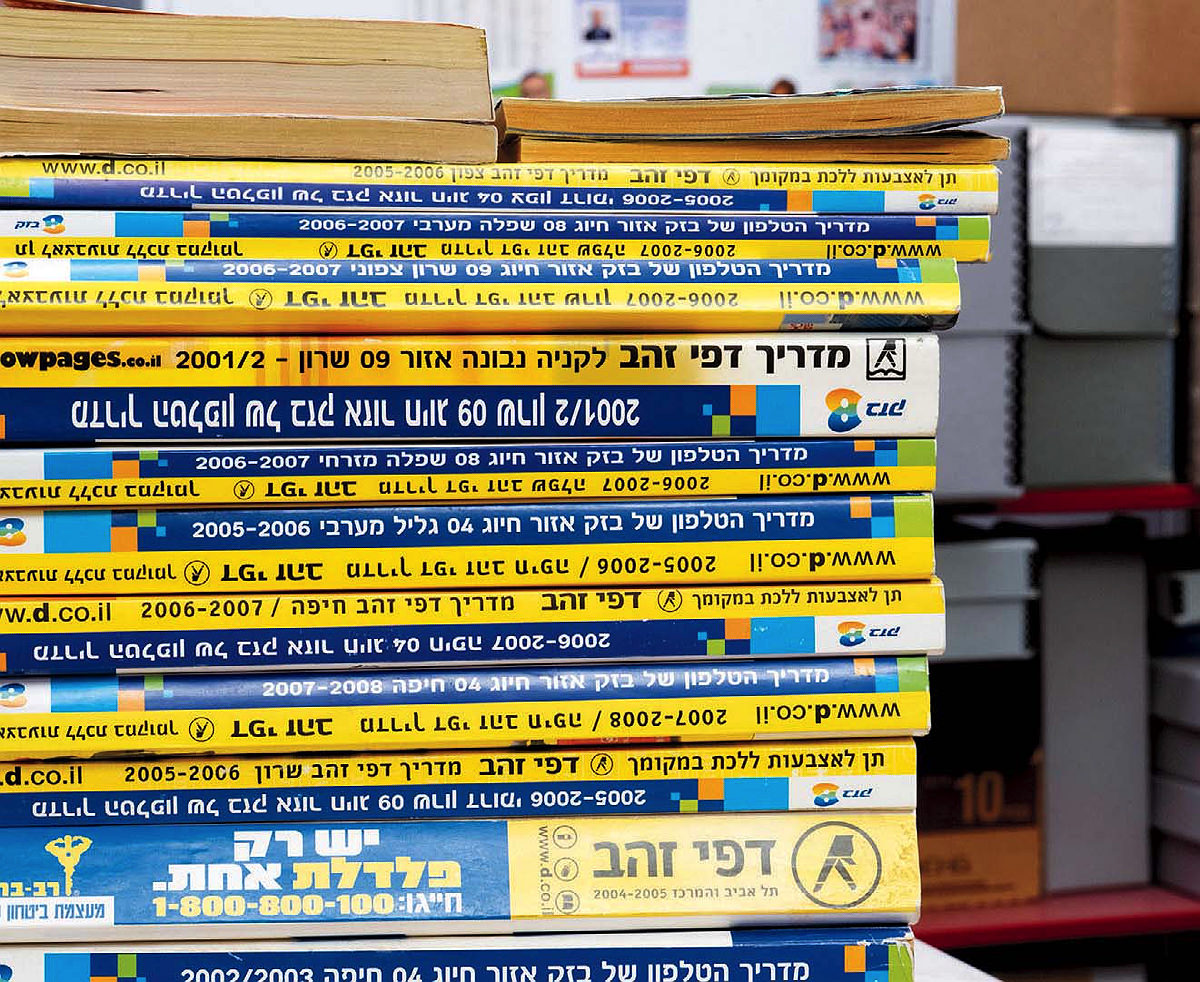
Israeli telephone books from the early 2000s
Photograph by Stu Rosner
Whenever people ask Berlin about the strength of the division, he invariably answers by talking about the staff: five full-time employees (plus a rotating army of student workers), who handle acquisitions, cataloging, digital and reference services, fundraising, publications, data analysis, and statistics. Besides Berlin, Samuels, and Vernon, the staff includes Littauer Hebraica cataloguer Hadassa Schwartz, and Littauer Hebraica technical and research services librarian Violet Radnofsky, who is responsible for the division’s digital collection. “We are lean and mean, small but efficient,” Berlin says.
Penslar echoes that praise: “Having the material is only part of the story,” he says. “The resourcefulness of the staff…whatever research questions I have posed to Violet and Elizabeth, they always have answers at their fingertips.” Menachem Butler offers a similar sentiment. The program fellow for Jewish legal studies at the Law School’s Julis-Rabinowitz Program on Jewish and Israeli Law, Butler often turns to the collection’s archives for help in organizing conferences, workshops, classes, and seminars. He thinks of the division staff as research collaborators and calls Berlin a friend and mentor (Butler recently discovered an additional, unexpected connection: his grandmother, Chantze Bard Butler, was Berlin’s first- and second-grade teacher in Hebrew school in Boston. Berlin remembers that on the report card in which his usual string of As was marred by a B, she wrote, “Try harder.” In a video recorded for her 99th birthday, not long before she died this April, he told her he’s been trying harder ever since.)
“The passion that Dr. Berlin and his staff have—and it’s without ideological bias—they understand that they are the collectors and securers of knowledge about the Jewish experience around the world,” says Butler. “And the Jewish experience around the world hasn’t always been so easy. There hasn’t always been documentation—there’s been a lot of destruction. There’s also been rebirth.” He points to the communities that emerged from the former Soviet Union, and the newspapers, pamphlets, books, and newsletters that followed their migration to North America, Israel, or elsewhere. In places like the Judaica Division, “Their story can now be told with documentation, not just oral histories.”
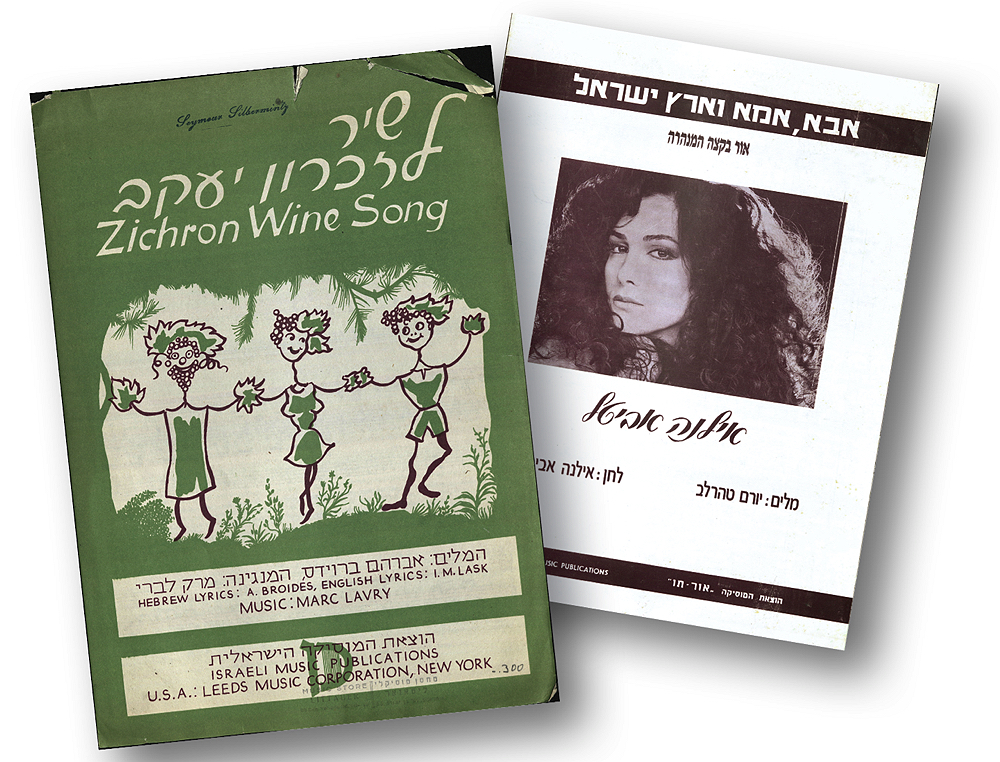
From Left: 1952 score for an Israeli musical piece known in English as "Zichron wine song"; musical score for a 1985 composition by Israeli singer Ilana Avital—the title translates to "Mother, Father and the Land of Israel: A Light at the End of the Tunnel"
Images courtesy of the Harvard Judaica Division, Widener Library
Ruth Wisse, Peretz professor of Yiddish literature and comparative literature emerita, argues a similar idea. One of the Judaica Division’s great treasures, she says, is a collection from the late scholar and archivist Leyzer Ran, an important chronicler of the centuries-old Jewish civilization in the city of Vilna (now Vilnius, Lithuania). During the Holocaust, the Nazis built a Jewish ghetto in Vilna, from which only a few hundred survived. Later, Ran—who grew up in Vilna, but spent the war in Soviet gulags and exile, returning to find his home city in ruins—began collecting “absolutely everything he could assemble,” Wisse says, “that had to do with Vilna before its destruction”: photographs, drawings, programs for memorials and school celebrations, invitations to musical performances and literary evenings. “The idea of the destruction of European Jewry was to leave nothing of this material,” Wisse says. “Leyzer Ran canvassed people and saved whatever he could.” He published a three-volume history of pre-war Vilna, and after his death in 1995, Ran’s family donated the collection, which also includes books, pamphlets, and correspondence, to Harvard. Talking about Ran and his eclectic archive reminds Wisse of “something else that should be said” about Berlin and the division: “Charles is not only diligent but extremely inventive,” she says. “The whole idea of ephemera had not played a large part in the library thinking of the Judaica world. But he understood very early on that being a librarian today, during a very dynamic period in Jewish history, he could collect—and should collect—not just books and magazines and the usual written materials.”
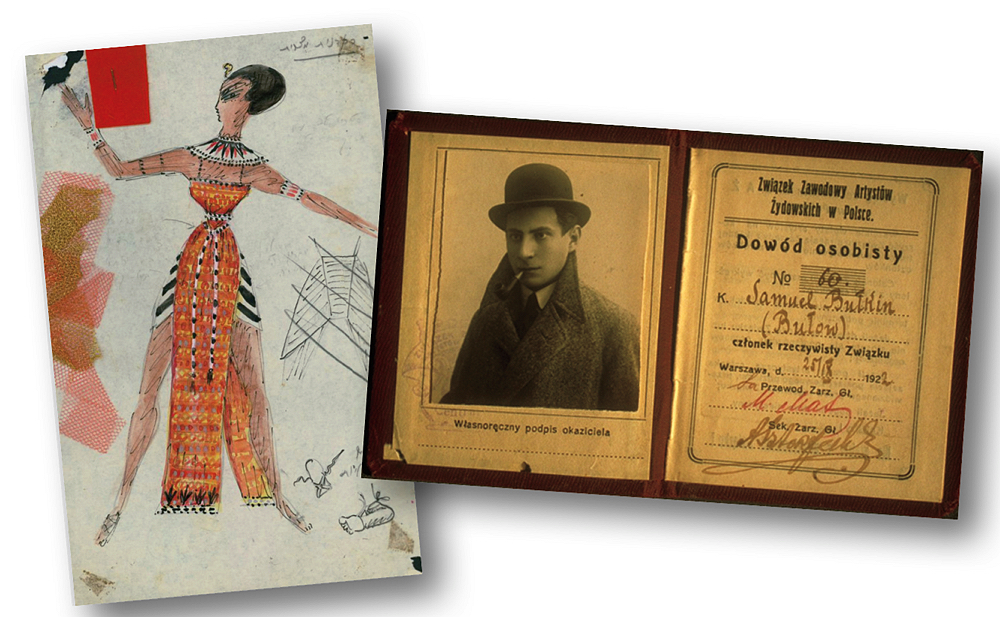
From left: a 1963 costume design,"Egyptian Dancer" by Russian-born Israeli artist Arie Navon; a 1922 membership ID from the Jewish actors' society of Poland, belonging to Samuel Bulkin Bulow (known on the stage as Joseph Buloff)
Images courtesy of the Harvard Judaica Division, Widener Library
Berlin made other crucial early decisions as well. Soon after arriving at the division, he began soliciting donations for book funds to build an independent endowment; in 1970 he set up a dues-paying organization, Friends of the Harvard Judaica Collection. Today there are some 450 endowed library funds for Judaica, contributing to an endowment that covers the division’s entire annual budget, including acquisitions and salaries (the value of the endowment is not public). That financial self-sufficiency has been important, especially at a time when other institutions have cut their funding for Judaica, Berlin said, or, in some cases, given up their holdings altogether.
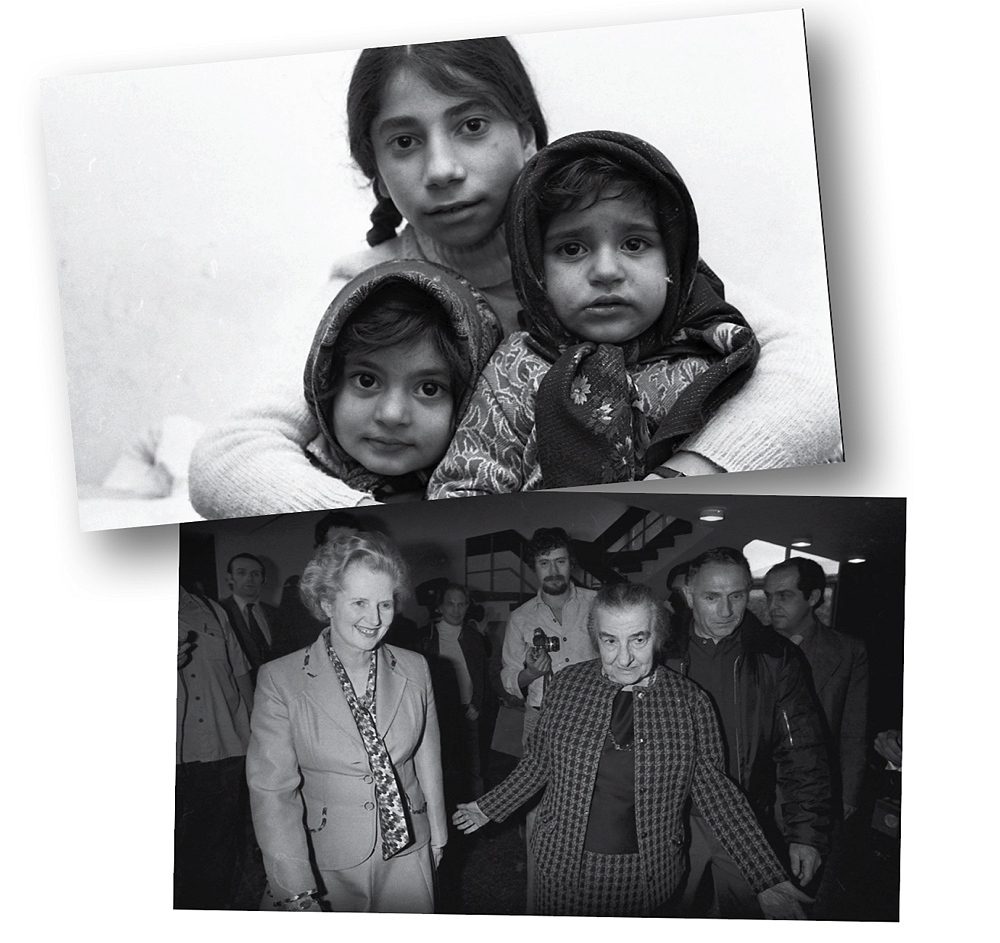
From top: Soviet immigrant children in an Israeli development town, 1975; British Conservative Party leader Margaret Thatcher visits former Israeli prime minister Golda Meir at Kibbutz Revivim in 1976 (both photographs from Harvard's Israel Sun, Ltd., photo archive).
Images courtesy of the Harvard Judaica Division, Widener Library
Another decision was to invest in technology and begin digitizing materials as soon as it became possible. In the early days, Berlin recalls switching between two typewriters—one Hebrew, the other English—to produce catalog cards. “We thought that a new world had opened up the day IBM announced they had an electric Selectric bilingual typewriter.” During the last 30 years, digital technology has revolutionized archival practices. The division has put significant holdings online. The division’s ever-expanding digital collection includes more than 5.9 million images, 11,500 books and pamphlets, 265,000 posters, 135,000 other ephemera, and 117,750 maps of Israel. The digital archive also includes 60,000 hours of audio, primarily Israeli radio broadcasts, and 30,000 hours of video, from Jewish and Israeli videocasettes and television.
"Our attitude was, we collect today what we can get today, and how we make it available, the good Lord will provide."
Before digital technology, the division’s “mountain of Israeli posters” were difficult for researchers to use, Berlin recalls—heavy to lift and cumbersome to sort through. “But our attitude was, we collect today what we can get today, and how we make it available, the good Lord will provide. And He did.” In recent years, the staff has approached photographers, offering to digitize their filing cabinets full of negatives; one Israeli photo agency sold its entire inventory to Harvard: 2 million photographs, now digitized, detailing life in Israel from 1968 to 2003. Other partnerships—with an Israeli cartoon museum, an Israeli dance company, the National Library of Israel, and Jewish press organizations in Central and Eastern Europe—have yielded digital holdings shared with those institutions. “It’s a global enterprise,” Berlin says, “united by one simple goal: documenting Jewish life.”
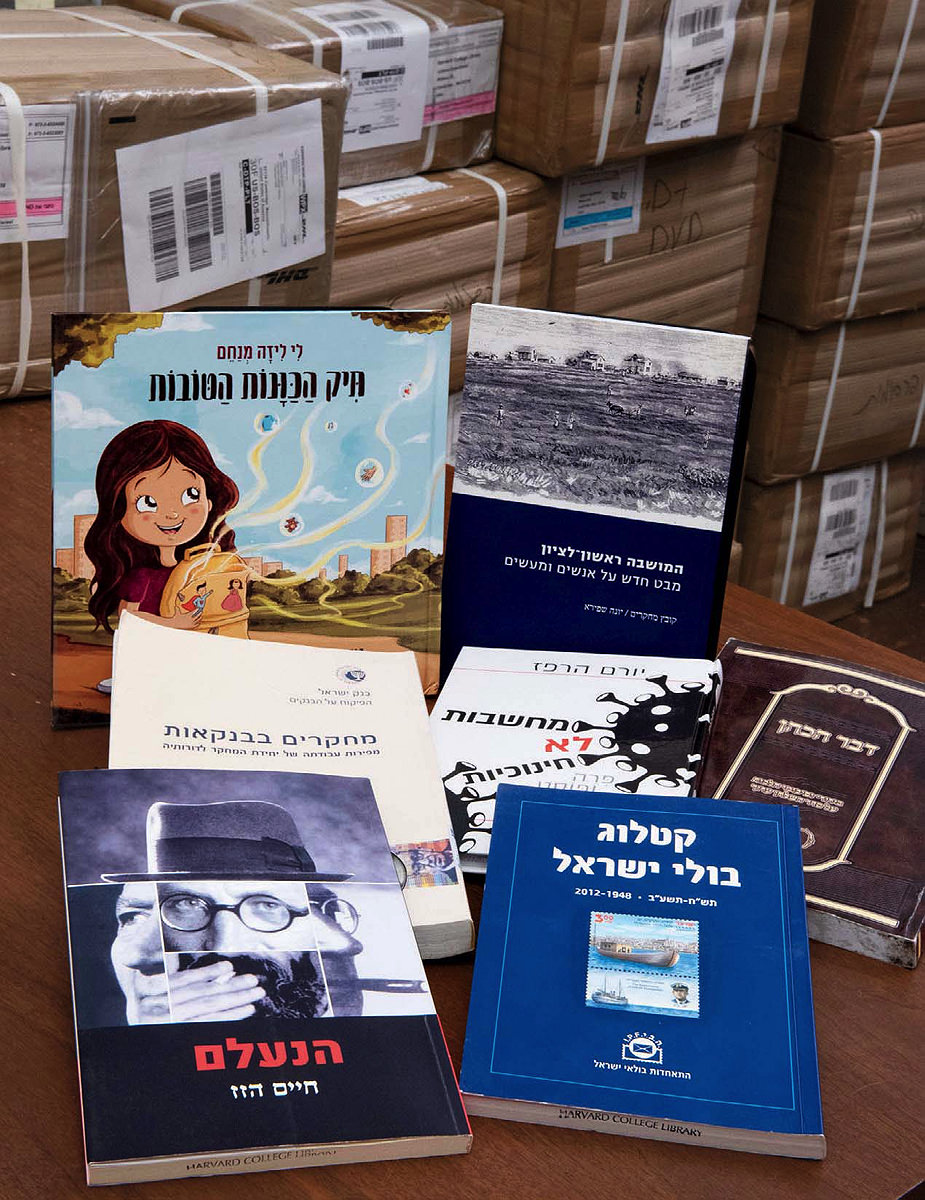
A sampling of the division's collection of Israeli books, with subjects ranging from children's literature and fiction to science, religion, banking research, Jewish law, COVID-19, and a catalog of Israeli stamps
Photograph by Stu Rosner
There’s one last story Berlin wants to tell, about the vendors who unearth the documents and artifacts that become part of the collection. It’s a mosaic of characters: firms in Germany, the Netherlands, France, and Italy with long-term ties to Harvard Library. In Israel, where the division derives the bulk of its collection, Berlin works with a books wholesaler whose owner first approached him 40 years ago, and whose contacts throughout the country now regularly turn up obscure ephemera that would otherwise disappear: election doorknockers, candidate brochures, posters advertising local events for Mother’s Day or “women’s athletic day.” “I don’t know how he does it,” Berlin says. Meanwhile, a rare-books vendor in Argentina, now mostly retired, first began selling material to Harvard 40 years ago, everything from books to Yiddish theater posters. As a young man, “He would go to the homes of retired Yiddish actors and actresses in Buenos Aires and other cities, and ask if they had material from their careers that he could buy,” Berlin recalls. “And they did.” A librarian from Mexico City, whom Vernon met at a conference, has for years supplied books and other materials, including a remarkable collection of bar mitzvah and Jewish wedding invitations. A group of friends in Saratoga Springs, New York, collect “what we call ‘Jewish junk mail’ from national Jewish organizations,” Vernon says, to send to the library. “We get boxes and boxes of this, and it’s fantastic.” A rabbi from New York City (“one of the leading lights in the modern Orthodox movement,” Berlin says) sends similar packages from his home. So does an alumnus in Australia, a volunteer in Paris, and a rabbi in Hungary. In Canada, an older man for many years shipped Judaic material from his mailbox; after he died, his grandson took up the effort.
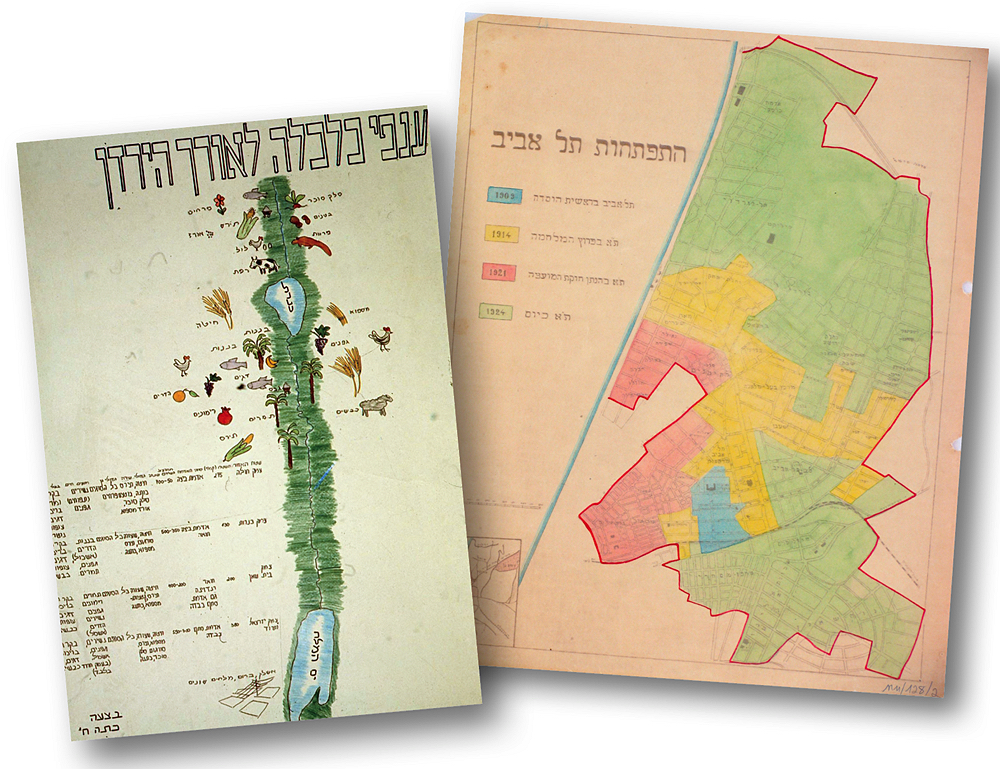
From left: a map of industries along the Jordan River, circa 1960s, from the Jewish National Fund; a 1924 map of Tel Aviv's growth, from the Central Zionist Archive
Images courtesy of the Harvard Judaica Division, Widener Library
“We have people of goodwill who understand how important this is,” Berlin says. “Without them, we would not have this material. It would be lost, basically, forever.” He returns to a favorite metaphor: the Judaica Division as a ship, captained and crewed by him and his staff, docked in “the welcoming port of Harvard University,” and carrying a precious cargo. The vendors and volunteers who supply the collection are helping fulfill what Berlin calls “a moral obligation.” Jewish culture, in all its forms, is “an important record of humanity,” he says. “And we want to preserve it.”









